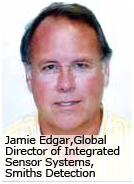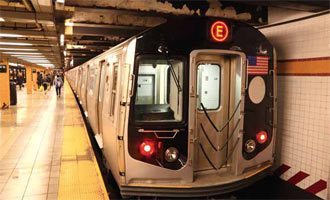From boarding public transit to reaching one’s destination, a great deal can occur. Each step of the way has unique concerns, which must be considered in the system design.
Troubleshooting
From boarding public transit to reaching one's destination, a great deal can occur. Each step of the way has unique concerns, which must be considered in the system design.
Most systems require some form of payment, although some transit authorities subsidize rides. Interoperability problems are rare,as card reader formats are mature. “Moreover, the RFID inlays are normally strictly specified in the tenders, and this already eliminates potential problems,” said Samuli Str?mberg, VP of Marketing, RFID, UPM Raflatac
Sniffing Out Threats
Detection is moving from airports into mass transit. Some high-threat stations and terminals have chemical and sometimes biological sensors inside. These life safety systems provide multiple layers of protection. “Explosives are actually the most likely threat,” Edgar said. Programs to protect against the other threats of radiation, biological and chemical threats depends on the site's threat profile.
Transit operations also need to consider where buses and trains are stored. “The ability to get to and remove a vehicle off hours from storage and have it driven off into the city by terrorists is a concern,” Edgar said.
The operating environment will affect the system's design as well. In the Washington, D.C. Metro, detection equipment requires frequent maintenance due to dirt and dust which can clog the sensors. “You have to understand the background environment and guide the customer to a technically sound solution,” Edgar said.
Powered Up
 Trains and buses require fuel to run, leaving limited power for other onboard systems. A power outage can be catastrophic, such as the December 2010 blizzard that knocked out power to several subway trains in New York City. Hundreds of frigid passengers were stranded for up to seven hours, until rescue teams reached them.
Trains and buses require fuel to run, leaving limited power for other onboard systems. A power outage can be catastrophic, such as the December 2010 blizzard that knocked out power to several subway trains in New York City. Hundreds of frigid passengers were stranded for up to seven hours, until rescue teams reached them.
As onboard power is largely devoted to the bus or train, mobile equipment will use power sparingly or generate their own power supply. Public address systems deploy digital power amplifiers with a switching power supply, Shimizu said. Other sources of power include batteries, solar panels and cigarette lighters for vehicles, said Cosimo Malesci, VP of Channel Sales and Marketing, Fluidmesh Networks.
In the event the bus engine is switched off, some equipment can run off power from the car battery, said James Tseng, Senior VP of Telexper. Its mobile DVR is powered independently from the engine because events could happen once the bus is parked, such as the driver being assaulted or held up. Recording after the bus comes to a halt ensures all video data is written, rather than abruptly stopping. Constant shutdowns before data is properly saved could shorten the DVR's performance, such as requiring disk reformatting every two weeks.
UTC Fire & Security MobileView, formerly a product of GE Security, works with a minimal amount of electrical draw on buses or trains. “It is a concern unique to the mobile atmosphere and different from fixed security systems,” said Craig Szmania, Mobile View Business Leader, UTC Fire & Security.
 Equipment power consumption can be reduced, but the main issues for mobile power supply are unstable voltage and high peak pulse. “The power supply voltage of the generator varies badly — sometimes double — and the electric power includes high peak pulses, which affect the announcement's noise and distortion,” Shimizu said. “If the system does not have any protection against high peak pulses and sufficient tolerance for voltage, the passengers will hear very noisy and distorted announcements.”
Equipment power consumption can be reduced, but the main issues for mobile power supply are unstable voltage and high peak pulse. “The power supply voltage of the generator varies badly — sometimes double — and the electric power includes high peak pulses, which affect the announcement's noise and distortion,” Shimizu said. “If the system does not have any protection against high peak pulses and sufficient tolerance for voltage, the passengers will hear very noisy and distorted announcements.”
To account for power spikes, surge protection must be designed into mobile equipment. “We caution against systems that are not manufactured specifically for mobile use as standard, fixed systems that are modified generally experience high failures related to power issues in mobile applications,” said Rodell Notbohm, GM of Apollo Video Technology. Shimizu added that only durable solutions could withstand vibration, dust, humidity and bad grounding.